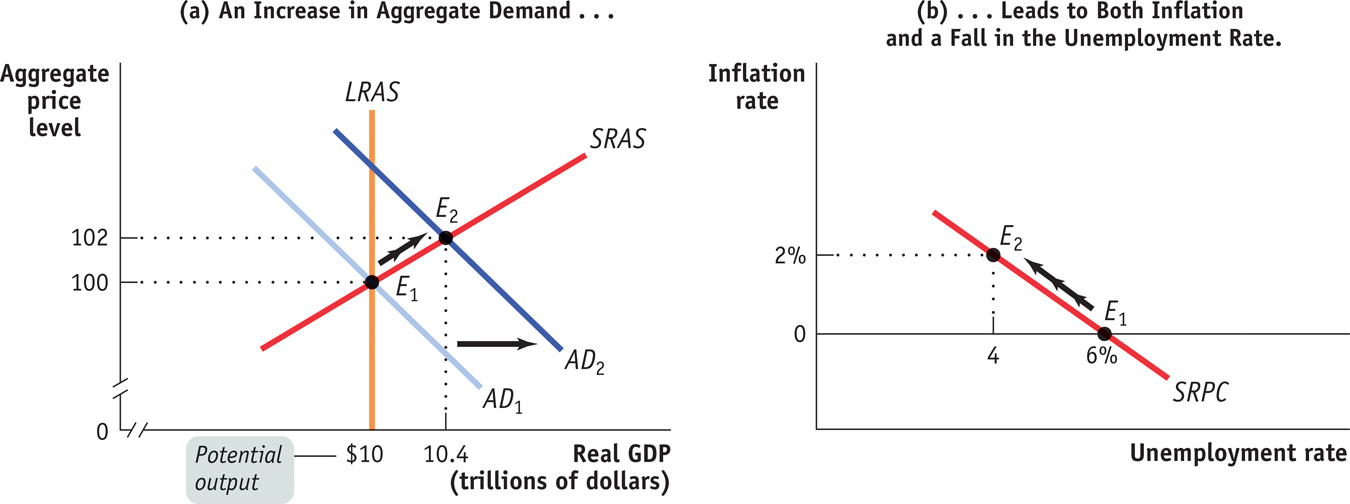31-7
The A

The AD– AS Model and the Short- Run Phillips Curve The short- run Phillips curve is closely related to the short- run aggregate supply curve. In panel (a), the economy is initially in equilibrium at E1, with the aggregate price level at 100 and aggregate output at $10 trillion, which we assume is potential output. Now consider two possibilities. If the aggregate demand curve remains at AD1, there is an output gap of zero and 0% inflation. If the aggregate demand curve shifts out to AD2, there is an output gap of 4%—reducing unemployment to 4%—and 2% inflation. Assuming that the natural rate of unemployment is 6%, the implications for unemployment and inflation are as follows, shown in panel (b): if aggregate demand does not increase, 6% unemployment and 0% inflation will result; if aggregate demand does increase, 4% unemployment and 2% inflation will result.